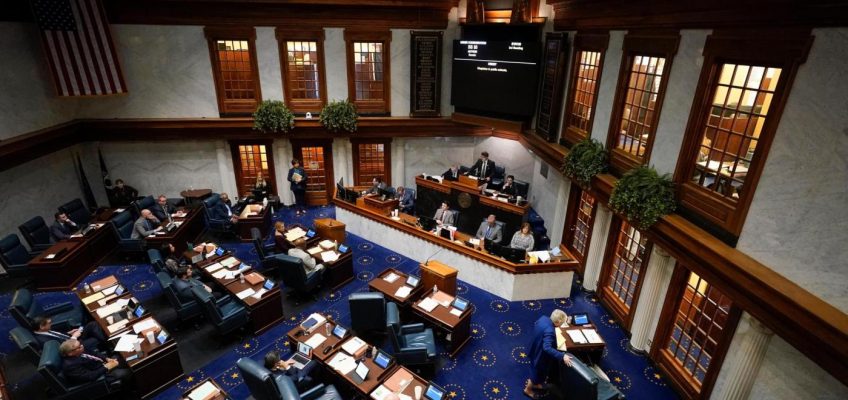By JAKE COYLE, Associated Press Film Writer
Paul Thomas Anderson’s “One Battle After Another” scored a leading nine nominations to the 83rd Golden Globe Awards on Monday, adding to the Oscar favorite’s momentum and handing Warner Bros. a victory amid its deal to be acquired by Netflix.
“One Battle After Another” landed nominations for its cast — Leonardo DiCaprio, Teyana Taylor, Sean Penn and Chase Infiniti — along with nods for Anderson’s screenplay and direction. It’s competing in the Globes’ category for comedy and musicals.
Close on its heels was Joachim Trier’s “Sentimental Value,” a Norwegian family drama about a filmmaking family. The Neon release’s eight nominations included nods for four of its actors: Stellan Skarsgård, Renate Reinsve, Elle Fanning and Inga Ibsdotter Lilleaas.
This image released by Neon shows Renate Reinsve, left, and Inga Ibsdotter Lilleaas in a scene from “Sentimental Value.” (Kasper Tuxen/Neon via AP)
The Globe nominations, a tattered but persistent rite in Hollywood, are coming on the heels of the a potentially seismic shift in entertainment. On Friday, Netflix struck a deal to buy Warner Bros. Discovery for $72 billion. If approved, the deal would reshape Hollywood and put one of its most storied movie studios in the hands of the streaming giant.
Both companies are prominent in this year’s awards season. Along with “One Battle After Another,” Warner Bros. has “Sinners,” Ryan Coogler’s acclaimed vampire hit. It was nominated for seven awards by the Globes, including box office achievement.
This image released by Warner Bros Pictures shows Michael B. Jordan, foreground from left, Michael B. Jordan and Omar Benson Miller in a scene from “Sinners.” (Warner Bros. Pictures via AP)
Netflix’s contenders include Noah Baumbach’s “Jay Kelly,” Guillermo del Toro’s “Frankenstein” and the streaming smash hit, “KPop Demon Hunters.”
Nominations were read by Marlon Wayans and Skye P. Marshall, from Beverly Hills, California.
As the Globes continue to transition out of their scandal-plagued past, there’s one notable change this year. For the first time, the Globes are giving a best podcast trophy. The inaugural nominees are “Armchair Expert With Dax Shepard,” “Call Her Daddy,” “Good Hang With Amy Poehler,” “The Mel Robbins Podcast,” “SmartLess” and NPR’s “Up First.”
Related Articles
Broke for the holidays? 10 ideas to turn thrifting into gifting in St. Paul
10 notable books of 2025: A posthumous memoir about Epstein, ‘Hunger Games’ and reliving 2024
Netflix to acquire Warner Bros. studio and streaming business for $72 billion
St. Paul’s Grand Meander is Saturday. Here’s what to do, see and sample
Movie review: Brazil’s ‘The Secret Agent’ an intoxicating political thriller
After a series of controversies for the Hollywood Foreign Press Association, the group that previously put on the ceremony, the Globes were sold in 2023 to Todd Boehly’s Eldridge Industries and Dick Clark Productions, a part of Penske Media. A new, larger voting body of more than 300 people now vote on the awards, which moved from NBC to CBS on a shorter, less expensive deal.
Nikki Glaser is returning as host to the Jan. 11 Globes, airing on CBS and streaming on Paramount+. This past January, Glaser won good reviews for her first time emceeing the ceremony. Ratings were essentially unchanged, slightly dipping to 9.3 million viewers, according to Nielsen, from 9.4 million in 2024.
In the early going in Hollywood’s awards season, Anderson’s “One Battle After Another” has dominated and is seen as the Oscar best picture front-runner. Also in the mix are Chloé Zhao’s “Hamnet,” Trier’s “Sentimental Value” and Josh Safdie’s “Marty Supreme.”
Helen Mirren will receive the Cecil B. DeMille Award in a separate prime-time special airing Jan. 8. Sarah Jessica Parker will be honored with the Carol Burnett Award.




